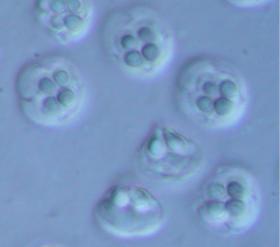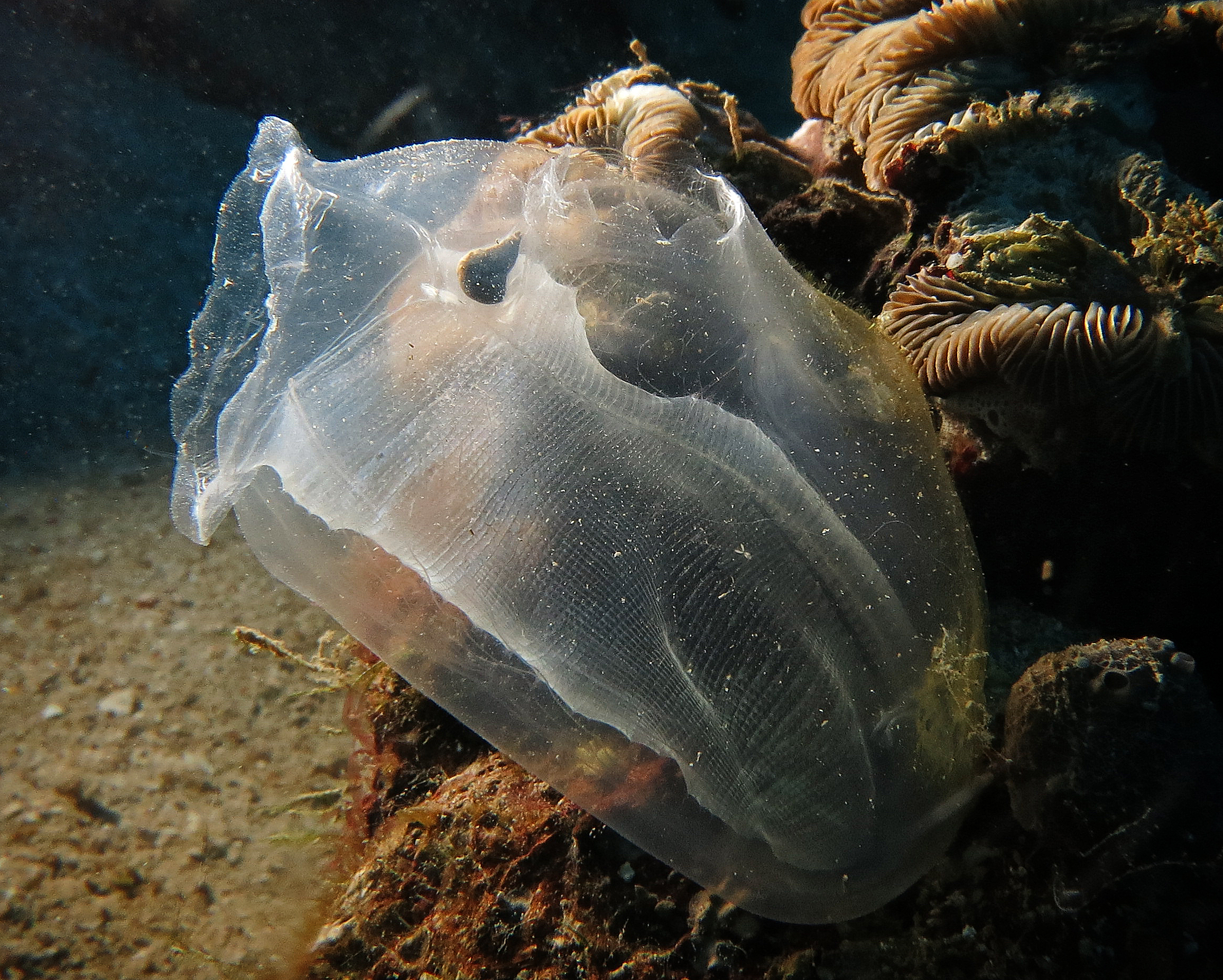Current research projects
The following topics are currently under active investigation:
1. Evolution of Myxozoan genome (in collaboration with Prof. Arik Diamant, National Center for Mariculture, and Prof. Paulyn Cartwright, The University of Kansas).With thousands of members, Myxozoa is among the least studied animal group. These parasites have a very simple organization but a complex life cycle that typically alternates between an annelid host and a fish host. Although they are known to cause damage to fish aquaculture, with important economic consequences, very few genes have been sequenced for these species.Using illumina sequencing we aim to improve our understanding of myxozoan genome evolution, and to clarify myxozoan phylogenetic relationships. |
|
2. Tunicate Phylogeny (in collaboration with Dr. Noa Shenkar, Tel-Aviv University, and Prof. Carmela Gissi, University of Bari Aldo Moro).Tunicates (e.g., sea squirts, salps and larvaceans) form a diverse group of marine animals, either sessile or planktonic. Aplousobranchia is the largest suborder of tunicates. Aplousobranchians are both sessile and colonial. Although aplousobranchians include several armful invasive-species, very little is known about their phylogeny: their family relationships are not resolved and even the number of families forming this suborder is still debated.We aim to sequence complete mitochondrial genomes for representative of the family diversity, in order to resolve relationships within Aplousobranchia. |
|
3. Phylogeny of sponges (in collaboration with Prof. Micha Ilan, Tel-Aviv University).Sponges are the first Metazoa (multicellular animals) to diverge. This diverse group includes about 5000 known species world-wide. They are found in virtually all aquatic habitats, although they are most common and diverse in the marine environment. They are divided into three classes and their systematics is debated. Even the monophyly of sponges has been questioned.We study the evolution of sponge mitochondrial introns and the diversity of Israeli sponges. |
|
4. Improving phylogenetic analysis.I am interested in understanding how to improve phylogenetic inferences by comparing different evolutionary models and diferent datasets. For example, in collaboration with Prof. Tal Pupko (Tel-Aviv University). We have studied different models for combining genes in phylogenetic analysis. Currently we are working on improving phylogenetic inferences based on indel characters. |
|
5. Phylogeography of various Israeli species.
I am involved in few projects that concern phylogeography of Israeli species. More particularly :Phylogeny of fruit flies (Tephritidae):
In collaboration with Dr. Amnon Freidberg and Liat Gahanama (Ph.D. student): Department of Zoology, Tel-Aviv University.
Phylogeography of Israeli shrews:
In collaboration with Prof. Shai Meiri : Department of Zoology, Tel-Aviv University.
Molecular diversity of benthic ctenophores (Coeloplanidae) from the Gulf of Aqaba:
In collaboration with Prof. Yossi Loya and Ada Alamaru (Ph.D. student): Department of Zoology, Tel-Aviv University.
Past collaborations
[Back]


